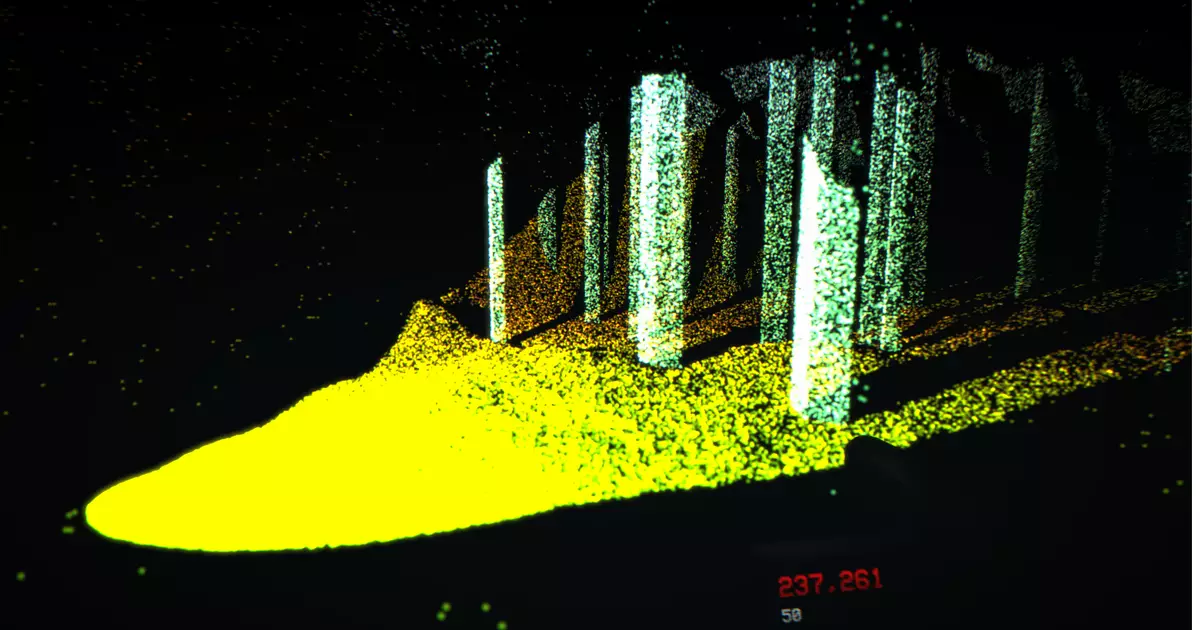In a world where technology and creativity intertwine, the emergence of LiDAR technology marks a pivotal moment. LiDAR, which stands for “light detection and ranging,” transcends its roots in purely scientific applications. Originally centered around mapping intricate environments or analyzing geological changes, it has now found a new canvas in the realm of gaming. The juxtaposition of rigorous science and artistic expression breathes life into titles like KenForest’s *LiDAR Exploration Program*, a game that dares to blend atmospheric horror with the meditative exploration of illuminated landscapes.
What captures the imagination is the unique premise of using a handheld LiDAR scanner as the primary tool to unveil hidden layers of the environment. Players are not simply observers but active participants in crafting their surroundings. The game offers a fascinating exploration of how light can shape perception and influence emotional engagement, proving to be far more than just a visual gimmick. It’s a sophisticated dance where technology becomes an artistic brush, painting vivid scenes that oscillate between beauty and unease.
The Relaxing Horror: A Paradox of Emotions
At first glance, *LiDAR Exploration Program* captivates with its serene landscapes and methodical gameplay, reminiscent of simulation games like *PowerWash Simulator*. The tranquil engagement enables players to immerse themselves fully in the act of scanning. Each angle reveals new dimensions, yet there lies an unsettling undercurrent. This duality creates a haunting atmosphere that lingers long after a session concludes. The game instills a sense of calm, one akin to quiet exploration, while simultaneously teasing the edges of dread that resonant with classic horror tropes.
Using the LiDAR scanner, players are drawn into a slow, almost poetic unraveling of each environment. As one scans the terrain, the illusion of solidity can be abruptly shattered; surfaces often betray their hollow interiors. This dissonance unsettles the player, as they begin to question the very foundations of reality within the game. It is a calculated design choice that nudges at existential themes, confronting players with the realization that what appears tangible might be merely superficial.
The Delicate Mechanics of Scanning
The mechanics behind the gameplay further enrich the experience. Players can manipulate the scanner’s cone of vision, honing in on details while taking pleasure in the soft, oscillating beams of light. The right-click alternate fire expands this exploration, allowing a panoramic view that hints at the layers beneath. Each interaction—every scan and adjustment—feels deliberate, almost therapeutic. This enthralling focus on light and texture provokes a reflective mindset, reminiscent of artists who stand before a blank canvas grasping for inspiration.
One might argue that not all horror elements coalesce seamlessly within the gameplay. The true horror lies not in conventional jump scares but rather in the slow, creeping realization of isolation and uncertainty. Approaching a seemingly empty space, one might ask, “What lurks just beyond this illuminated expanse?” The game skillfully encourages players to contemplate not only what is seen but also, crucially, what remains hidden.
The Artistic Touch of Light and Shadow
Through its serene yet haunting nature, *LiDAR Exploration Program* transforms the act of scanning into an immersive art form. Players become artists themselves, painting with light to dissect the world around them. The luminous visuals invite them to notice the interplay of light and shade, echoing the philosophical contemplation of perception. Here, the nuance of light isn’t simply a tool for navigation; it’s a medium for expression, allowing players to leave their creative mark on an ethereal landscape.
In a world saturated with frenetic energy and instant gratification, KenForest’s endeavor pushes against the grain. The game fosters a deeper appreciation for the delicate properties of light and space. This unfurling of knowledge through gameplay suggests a more profound connection to our surroundings, inviting players to redefine their understanding of both art and environment.
Ultimately, *LiDAR Exploration Program* serves as a reminder of the beauty inherent in stillness, inviting players to dance between discovery and mystery. In an age where technological advancements often overshadow creativity, KenForest’s project stands as a powerful testament to the marriage of science and art.


Leave a Reply